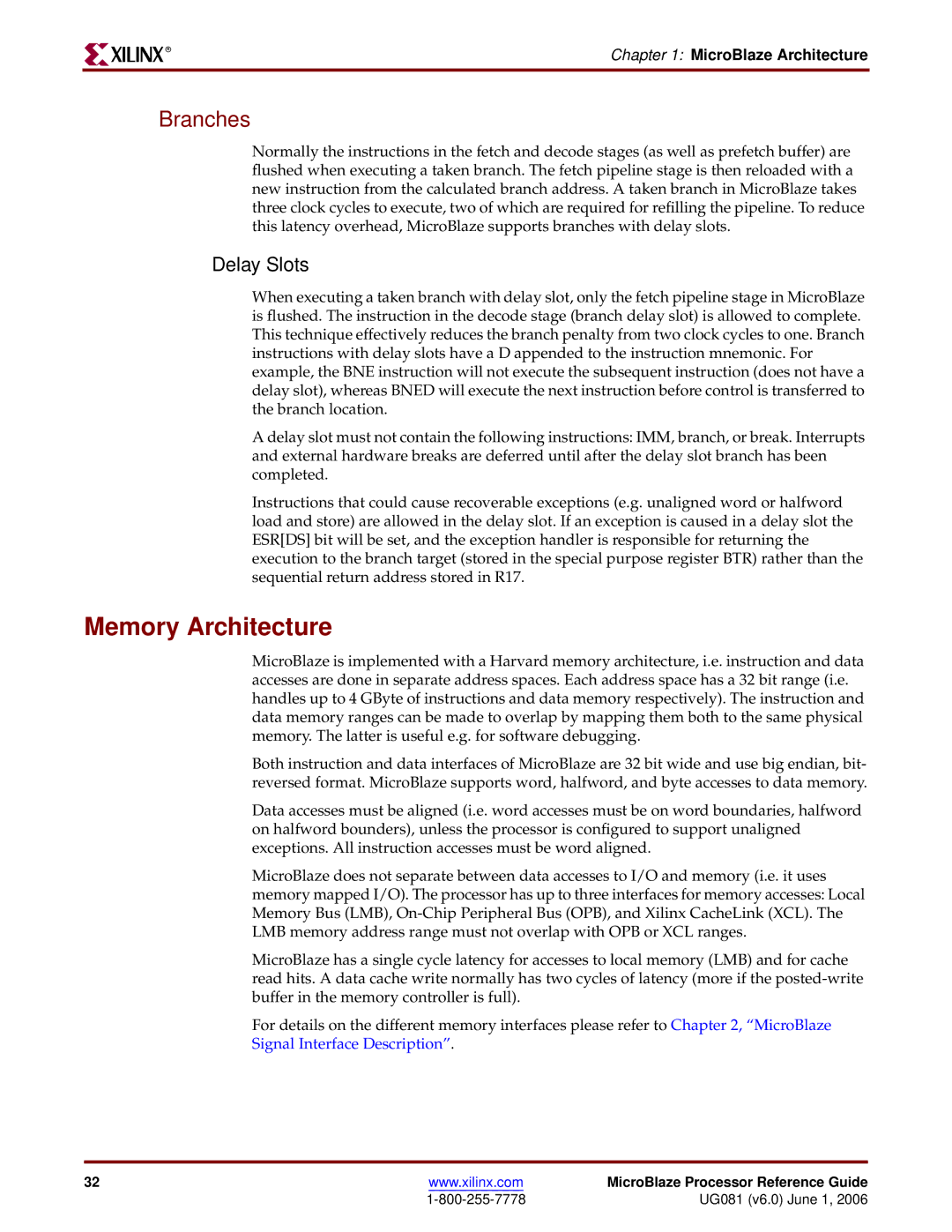
R
Chapter 1: MicroBlaze Architecture
Branches
Normally the instructions in the fetch and decode stages (as well as prefetch buffer) are flushed when executing a taken branch. The fetch pipeline stage is then reloaded with a new instruction from the calculated branch address. A taken branch in MicroBlaze takes three clock cycles to execute, two of which are required for refilling the pipeline. To reduce this latency overhead, MicroBlaze supports branches with delay slots.
Delay Slots
When executing a taken branch with delay slot, only the fetch pipeline stage in MicroBlaze is flushed. The instruction in the decode stage (branch delay slot) is allowed to complete. This technique effectively reduces the branch penalty from two clock cycles to one. Branch instructions with delay slots have a D appended to the instruction mnemonic. For example, the BNE instruction will not execute the subsequent instruction (does not have a delay slot), whereas BNED will execute the next instruction before control is transferred to the branch location.
A delay slot must not contain the following instructions: IMM, branch, or break. Interrupts and external hardware breaks are deferred until after the delay slot branch has been completed.
Instructions that could cause recoverable exceptions (e.g. unaligned word or halfword load and store) are allowed in the delay slot. If an exception is caused in a delay slot the ESR[DS] bit will be set, and the exception handler is responsible for returning the execution to the branch target (stored in the special purpose register BTR) rather than the sequential return address stored in R17.
Memory Architecture
MicroBlaze is implemented with a Harvard memory architecture, i.e. instruction and data accesses are done in separate address spaces. Each address space has a 32 bit range (i.e. handles up to 4 GByte of instructions and data memory respectively). The instruction and data memory ranges can be made to overlap by mapping them both to the same physical memory. The latter is useful e.g. for software debugging.
Both instruction and data interfaces of MicroBlaze are 32 bit wide and use big endian, bit- reversed format. MicroBlaze supports word, halfword, and byte accesses to data memory.
Data accesses must be aligned (i.e. word accesses must be on word boundaries, halfword on halfword bounders), unless the processor is configured to support unaligned exceptions. All instruction accesses must be word aligned.
MicroBlaze does not separate between data accesses to I/O and memory (i.e. it uses memory mapped I/O). The processor has up to three interfaces for memory accesses: Local Memory Bus (LMB),
MicroBlaze has a single cycle latency for accesses to local memory (LMB) and for cache read hits. A data cache write normally has two cycles of latency (more if the
For details on the different memory interfaces please refer to Chapter 2, “MicroBlaze
Signal Interface Description”.
32 | www.xilinx.com | MicroBlaze Processor Reference Guide |
| UG081 (v6.0) June 1, 2006 |
